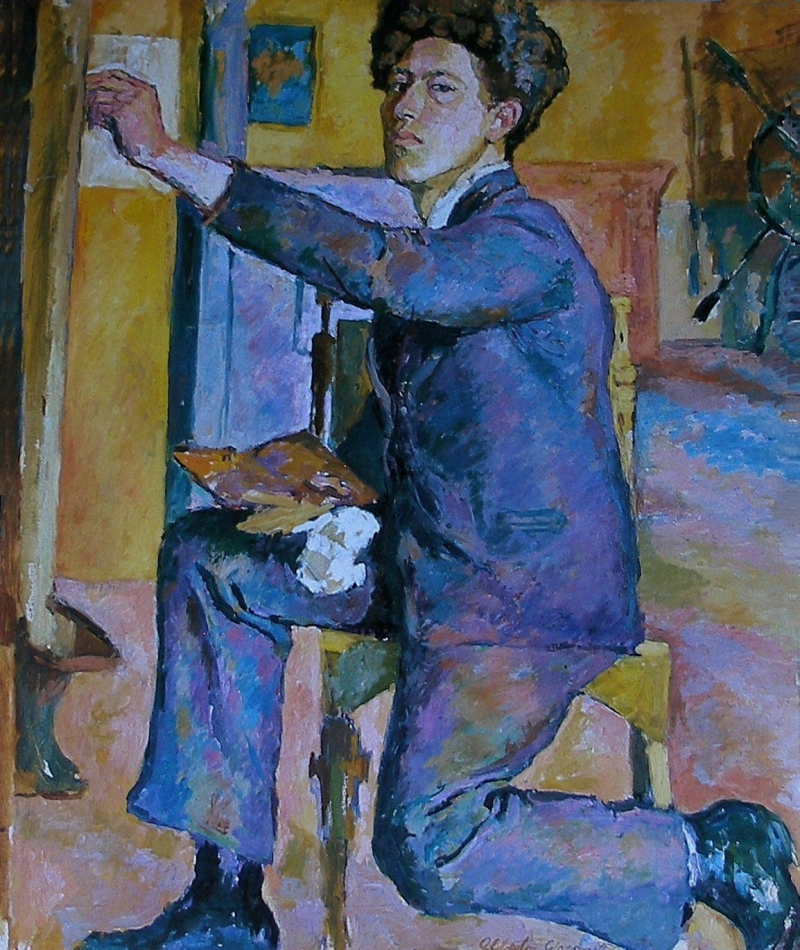Giacometti’s command of composition is absolutely marvellous in this superb painting.
I will focus on his wonderful integration of the figure with the other elements in the composition. Let’s begin with how your eye is taken across the painting from the seat of the chair, along the bottom of his jacket, to the bottom of his right leg, then you are guided up to the verticals behind. Another beautiful integration is how the curve at the bottom of his pant leg rhythmically connects to the curved element to the left, which in turn, guides you up to his hand. I love it! Also take note how the bottom of his trousers connects to the lower edge of his other leg and how the bottom of his pant leg then integrates with the chair leg. I was and still am taken with how he integrated the other chair leg (between his legs) with his pant leg. Can you feel how the angle in the chair runs into his pants creating a small blue triangle? (see detail)
This very impressive small dark blue triangle provides a sense of overlapping. The top edge of this gorgeous little triangle also parallels a dark line above which in turn integrates with the edge of his palette. Can you feel the movement and shapes? There is also another sense of an angle at the bottom of the dark line (creating another plane) which parallels the angle in the chair leg. There is more. That dark line also connects to a subtle purple line which carries downward into his leg, creating another wonderfully subtle triangle.
Note the line just to the left of his pocket and how this guides you up to the front of his neck and how his chin and his collar connect to the horizontals behind. Just one more, it’s how he leads you upwards through his arm from the opening in his jacket.
There is more for you to engage with, and I hope you enjoy this wonderful early composition by this twentieth century master. I am impressed with how Giacometti permitted to show Cézanne’s influence.


